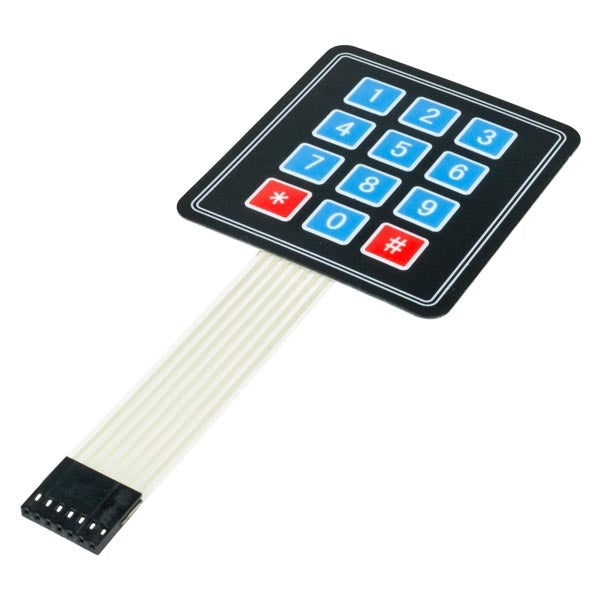Top Features to Look for in a High-Quality Membrane Switch
Top Features to Look for in a High-Quality Membrane Switch
Blog Article
Understanding Membrane Changes: The Key to Durable and Dependable Controls

What Are Membrane Layer Buttons?
Membrane layer switches are an innovative solution in the realm of interface technology, integrating capability and style seamlessly. These gadgets work as an interface in between customers and digital systems, incorporating a number of elements right into a small format. Generally created from flexible, thin layers of products, membrane buttons are created to reply to touch, enabling individuals to interact with machinery and digital gadgets properly.
The main aspects of a membrane layer button include a printed circuit layer, visuals overlay, and a spacer layer that protects against unplanned activation. The graphic overlay can be customized to mirror brand name identity or user preferences, improving aesthetic appeals while making sure use. Membrane buttons are generally used in various applications, consisting of clinical tools, customer electronic devices, and industrial tools, owing to their durability and resistance to ecological factors such as moisture and dust.
Among the essential advantages of membrane buttons is their capability to hold up against damage, making them optimal for high-traffic atmospheres. Furthermore, they are lightweight and need marginal area, permitting innovative layouts in product growth. On the whole, membrane changes represent a effective and sensible choice for modern-day digital user interfaces, marrying technology with user-centric design concepts.
Just How Membrane Layer Switches Job
The operation of membrane layer switches over joints on a straightforward yet effective system that converts user input into electronic signals. When a customer presses the button, the leading layer deforms, enabling a conductive aspect in the circuit layer to make call with an equivalent conductive pad on the underside of the graphic overlay.
The design of membrane buttons can differ, yet they often incorporate domes or tactile aspects to give responses to the individual, improving the overall experience - membrane switch. The products used in membrane switches, such as polyester or polycarbonate, contribute to their longevity and resistance to ecological factors, including moisture and dust. Additionally, the published circuits are normally enveloped, which shields them from damage with time.
Advantages of Membrane Layer Buttons

In addition, membrane layer buttons are recognized for their resilience. Built from robust materials, they are resistant to dust, wetness, and physical wear, which substantially expands their life-span contrasted to typical mechanical buttons. This durability makes them particularly suitable for high-traffic environments and applications requiring longevity.
Another significant advantage is the convenience of cleansing and upkeep. The smooth surface area of membrane changes reduces dust accumulation and is often impervious to spills, making them ideal for setups that call for constant sanitization.
Additionally, membrane switches offer a structured account, resulting in a thinner design that can be integrated right into different gadgets without adding mass. This function not only boosts the visual charm but additionally adds to a much more ergonomic product layout.
Applications of Membrane Layer Buttons
User-friendly and functional, membrane layer buttons find applications throughout a wide variety of industries, consisting of medical devices, customer electronics, and commercial devices. In the medical area, these switches are indispensable to gadgets such as diagnostic tools, client monitoring systems, and mixture pumps, where reliability and convenience of cleaning are critical. Their capacity to endure rough atmospheres and maintain functionality makes them excellent for such applications.

In customer electronics, membrane buttons are used in products like microwaves, cleaning machines, and push-button controls - membrane switch. Their streamlined design permits instinctive individual interfaces, boosting the overall individual experience while giving toughness and resistance to damage
Commercial equipment likewise takes advantage of membrane layer switches, especially in control panels for machinery and automation systems. These switches supply protection against dust and dampness, ensuring consistent performance in difficult environments. Additionally, their personalized functions sites enable manufacturers to tailor them to certain functional demands, boosting performance and functionality.
Picking the Right Membrane Layer Switch Over
When selecting a membrane switch, it is vital to think about different variables that affect efficiency and viability for certain applications. The main factors to consider include environmental conditions, tactile feedback, resilience, and design specifications.
First, examine the operating setting; buttons revealed to wetness, chemicals, look at here now or extreme temperatures require details products to make sure longevity and functionality. Next off, examine the requirement for tactile responses. Depending upon user interaction, some applications might gain from a tactile feedback to validate activation, while others might choose a non-tactile style for aesthetic factors.
Longevity is an additional essential variable; membrane switches need to be made to stand up to constant use, impacts, and abrasion. Make sure the selected button can endure the anticipated lifecycle, especially in high-usage circumstances.
Verdict
In verdict, membrane layer changes work as crucial parts in the style of trusted and long lasting control systems across various sectors. Their portable design, incorporated with durable building and customizable attributes, improves user communication while guaranteeing longevity popular atmospheres. The versatility of membrane layer switches enables tailored remedies that satisfy particular operational needs, reinforcing their significance in contemporary technology. As sectors remain to progress, the significance of incorporating reliable membrane button options can not be overstated.
Membrane switches over represent a Click Here vital facet of modern interface layout, mixing functionality with strength in different applications.Membrane switches are a sophisticated service in the world of customer interface modern technology, incorporating capability and layout effortlessly. Normally built from versatile, thin layers of materials, membrane layer buttons are designed to react to touch, allowing users to interact with equipment and electronic tools properly.
The style of membrane layer switches can vary, but they typically incorporate domes or responsive elements to supply comments to the individual, boosting the total experience.In conclusion, membrane layer switches over serve as crucial parts in the style of reliable and long lasting control systems across numerous sectors.
Report this page